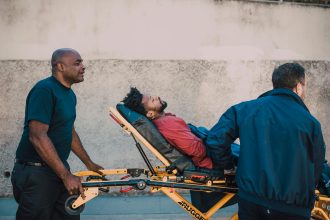A concussion is the mildest and most common form of traumatic brain injury (TBI). It happens when a blow, jolt, or sudden movement causes the brain to shift inside the skull. Even though concussions are often called “mild,” they are still brain injuries that can temporarily affect how a person thinks, feels, and functions.
Concussions are especially common in contact sports, car accidents, falls, and military settings. While most people recover fully, repeated concussions or inadequate rest after an injury can lead to lasting problems.
What Happens in a Concussion
During a concussion, the brain moves rapidly back and forth inside the skull. This motion can stretch and disrupt brain cells, leading to temporary changes in how the brain works. Unlike more severe injuries, concussions rarely cause visible damage on CT or MRI scans, but the effects are very real.
Symptoms can develop immediately or hours later, which is why close monitoring is important after any head injury.
Causes of Concussion
Concussions can result from many everyday situations:
- Sports injuries: Football, hockey, soccer, and boxing are high-risk.
- Falls: The leading cause in older adults and young children.
- Motor vehicle accidents: Whiplash and head strikes can trigger concussions.
- Military blast injuries: Shock waves from explosions can rattle the brain.
Symptoms of a Concussion
Concussion symptoms vary but often include:
- Physical: Headache, dizziness, nausea, blurred vision, balance problems.
- Cognitive: Confusion, difficulty concentrating, memory lapses, slowed thinking.
- Emotional: Irritability, sadness, anxiety, mood swings.
- Sleep-related: Sleeping more or less than usual, trouble falling asleep.
Some people lose consciousness briefly, but many do not. Because symptoms can be subtle, concussions are sometimes missed or mistaken for fatigue or stress.
More details are available in our Brain Injury Symptoms guide.
Diagnosis
Doctors diagnose concussions based on symptoms and neurological exams rather than imaging, which often looks normal. Common tools include:
- Neurological assessments for memory, reflexes, and coordination
- Concussion checklists used in sports and emergency settings
- Balance and vision testing
- CT or MRI scans only if there are red flags for more serious injury (bleeding, swelling)
Treatment and Recovery
The primary treatment for a concussion is rest — both physical and cognitive. This means limiting strenuous exercise, screen time, reading, and complex tasks until symptoms improve.
Recovery strategies include:
- Rest for the first 24–48 hours
- Gradual return to activity, guided by a doctor
- Avoiding risky activities that could cause another concussion
- Medications only for symptom management (headache, sleep issues)
Most people recover within 2–4 weeks. Children and teens may take longer.
Post-Concussion Syndrome
In some cases, symptoms last for months after the injury. This is called post-concussion syndrome (PCS). It may include persistent headaches, dizziness, concentration problems, and mood changes. PCS can be frustrating but is treatable with rehabilitation, counseling, and medical care.
Second Impact Syndrome
One of the biggest risks is sustaining a second concussion before the first has fully healed. This rare but dangerous condition, known as second impact syndrome, can cause rapid brain swelling and even death. Athletes and coaches must be vigilant about proper recovery before returning to play.
Long-Term Risks
Repeated concussions raise concern for chronic traumatic encephalopathy (CTE), a progressive condition linked to memory loss, mood disorders, and dementia-like symptoms. While research continues, prevention and careful management of concussions are critical.
Prevention
Concussions cannot be eliminated completely, but steps can reduce risk:
- Wearing helmets in sports, cycling, and motorcycling
- Following concussion protocols in athletics
- Fall prevention in older adults (handrails, home safety modifications)
- Seatbelt use in vehicles
- Education for coaches, teachers, and families about signs of concussion
Conclusion
A concussion is a mild traumatic brain injury, but its effects should never be taken lightly. With proper recognition, rest, and gradual return to activity, most people recover fully. Awareness is especially important for athletes, parents, and caregivers, since early intervention prevents complications and reduces long-term risks.
For more on brain injury recovery, see our guide: Brain Injury Recovery Stages.







